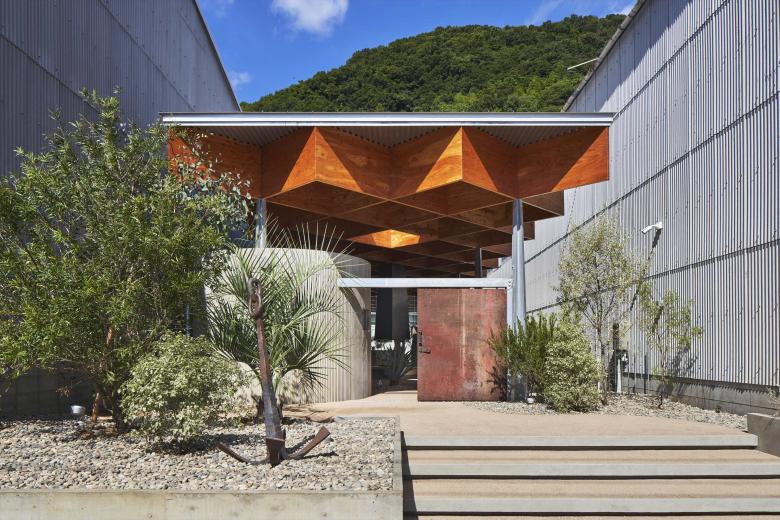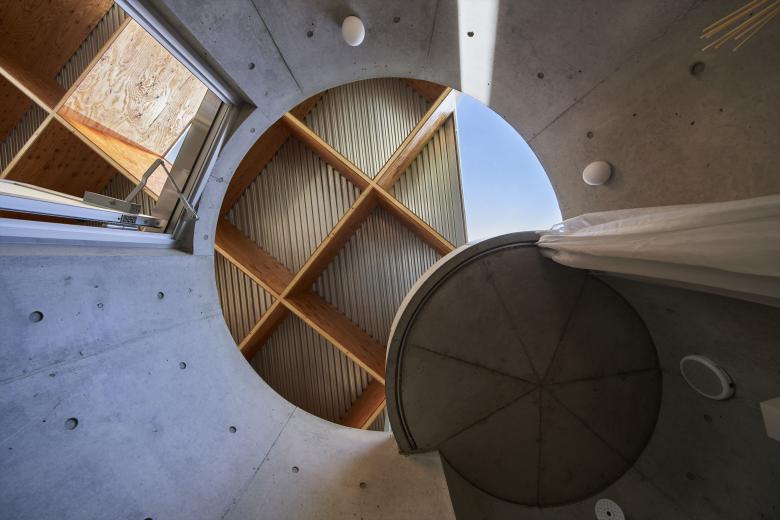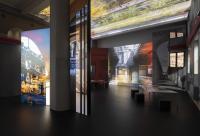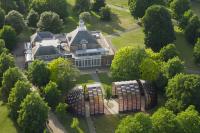santo
Tomonoura, Fukuyama-City, Hiroshima, Japan
Architectural project that resembles the products manufactured by the client that encourages public participation in an industrial area
"Innovative efforts during the coronavirus pandemic"
An ironworks factory, SANGYO Corporation, was established in 1951 in Kaji-cho, which translates to “blacksmith town”. Kaji-cho is in Tomonoura, Fukuyama city in Hiroshima prefecture. In 1965, Sangyo moved to the Ironworks area in Tomonoura that was newly established on reclaimed ground. Currently, Sangyo manufactures fittings by combining manufacturing techniques using machine tools and robots, as well as traditional free forging. The free forging technique has been used to make “Tomo Ikari” (translates to anchors in Tomonoura) and has been designated as a tangible local cultural asset. This project is part of a larger government funded strategy. As part of that strategy, this specific project aims to support Sangyo to transition from traditional anchor-making to furniture-making. In addition, Sangyo will have a marketing plan to sell their products, and has opened up to the public to experience the manufacturing process. This restructuring of the company is taking place in the wider context of economic instability caused by the coronavirus pandemic.
"An open factory that invites the public to participate in manufacturing and a shop that sells Sangyo’s unique products"
The client’s vision was to combine a shop, an office, a lounge space for customers, and an adjacent factory where customers can have a hands-on experience. The client asked us to create an outdoor space that is roughly half the size of the entire property, where visitors can use their handcrafted cookware on a fireplace and an outdoor kitchen. The client endeavors to create an open factory where they can conserve and promote their traditional manufacturing techniques.
"An outdoor space that aims to host a variety of activities"
We can reimagine the “factory” as an outdoor space since the entryways are often kept wide open. For this project, we pay more attention to the outdoor space that can serve various purposes - which is situated between two of the client’s factories with sheet metal walls - and to the material and textures of their products such as their tables manufactured by forging techniques. Prior to construction, the premise was surrounded by three factories, except the west side that faces the main street. We decided to dismantle a section of the factory on the east side owned by the client, and added a sheet metal wall. I also designed a large 7 x 30 m roof that looks like a table, which creates an open empty outer space, over the rectangular-shaped-premise. The roof has Vierendeel frames of 80 x 40 mm, in lattice formation at 45 degrees, with 12 mm structural plywood attached to both sides of the frames. I also arranged cross-shaped columns that widen towards the floor, BH-400×64㎜ and BH-150×64㎜, in a grid layout at 4,500 mm intervals with 6 spans. I arranged it so that the simple beauty of the “Tomo Ikari” shape stands out. Moreover, by utilizing the walls of the adjacent factories I aimed to create a spontaneous yet ordered space, where their products can be displayed.
I look forward to seeing how this industrial area, which is currently unattractive to the general public, is opened up to the surrounding community by developing businesses and cooperating with various tourist resources in Tomonoura. It is my hope that they will continue to pass on their traditional techniques as an industrial heritage down to successive generations.
principal use:Shop
structure:Steel structure
site area:401.22sqm
total floor area:191.91sqm
- Architecten
- Keisuke Maeda / UID
- Locatie
- Tomonoura, Fukuyama-City, Hiroshima, Japan
- Jaar
- 2022

















